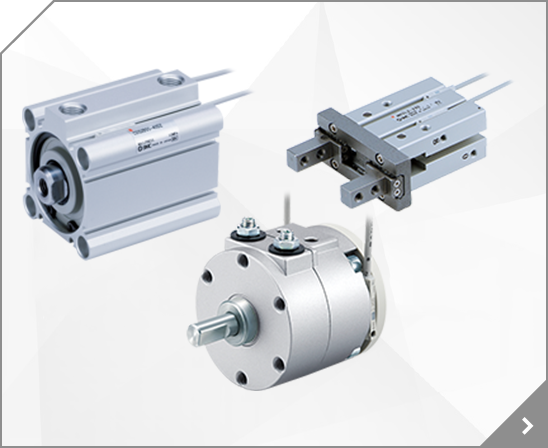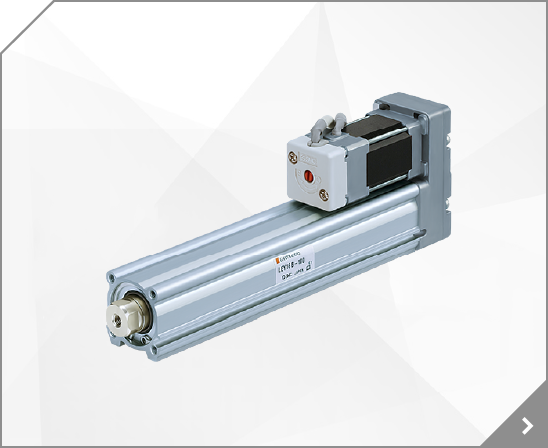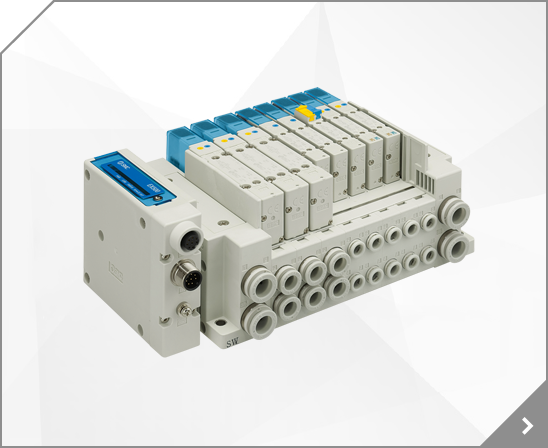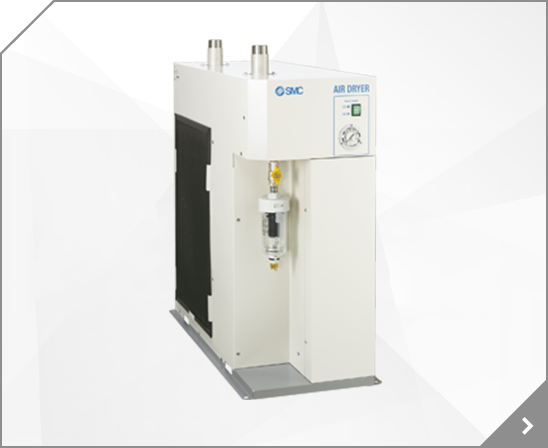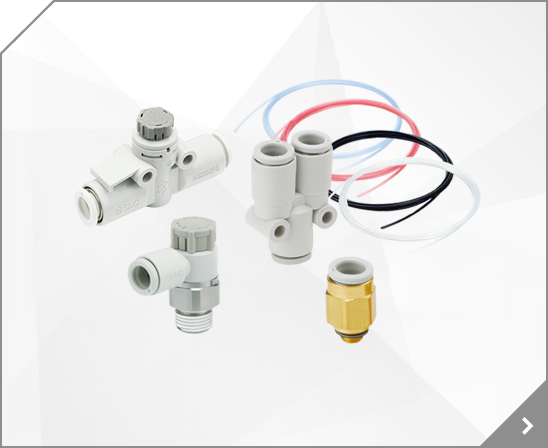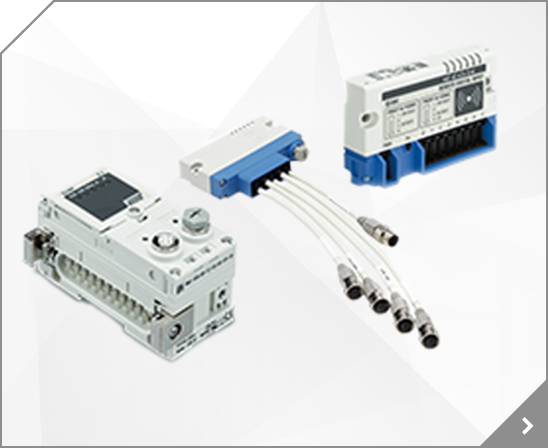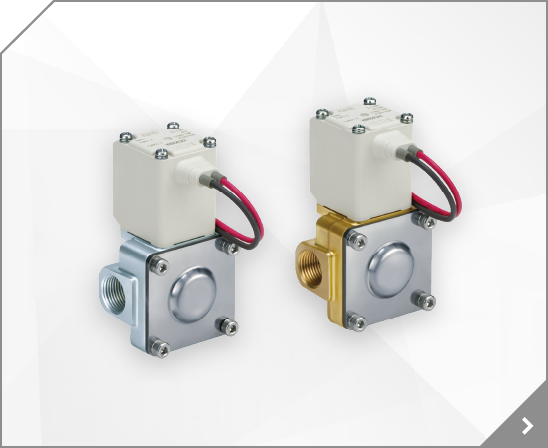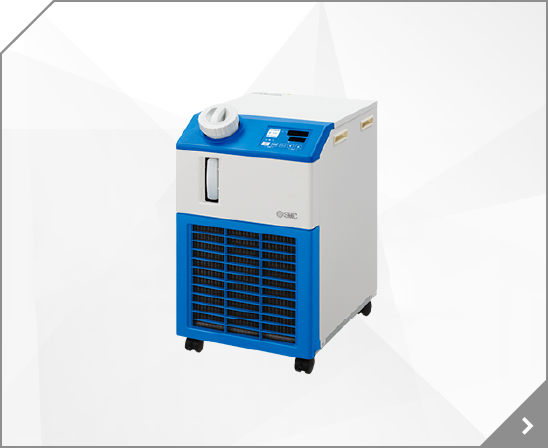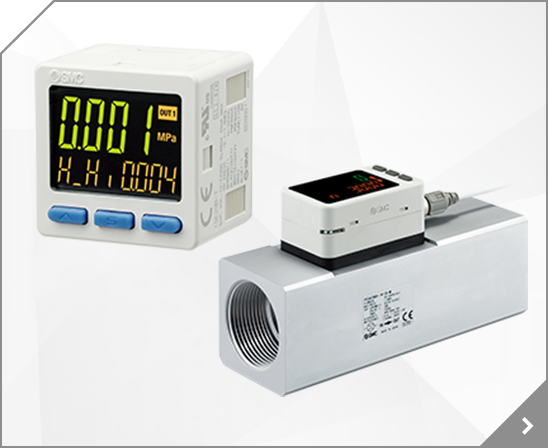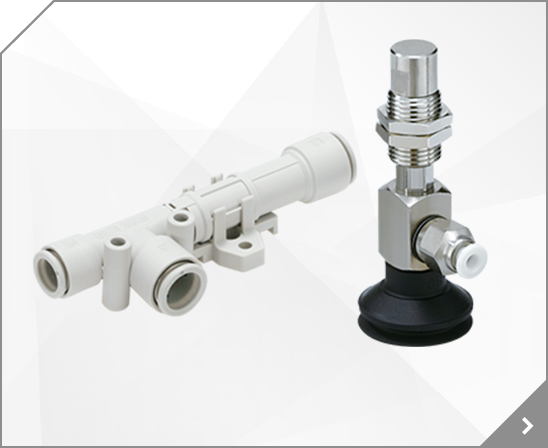
The SV series employs a multi-connector instead of the conventional lead wires for internal manifold wiring. By connecting each block with a connector, changes to manifold stations are greatly simplified. Cassette base type manifolds offer the ultimate in flexibility. Manifold sections can be added using a simple release mechanism. Conventional tie-rod base type manifolds are also available
The SV series employs a multi-connector instead of the conventional lead wires for internal manifold wiring. By connecting each block with a connector, changes to manifold stations are greatly simplified. Cassette base type manifolds offer the ultimate in flexibility. Manifold sections can be added using a simple release mechanism. Conventional tie-rod base type manifolds are also available
SS5V1 MANIFOLD SV1000. MFLD, PLUG-IN, D-SUB CONNECTOR. VALVE. SS5V1 BUILT IN FITTING 1/4). .96084 lb. UN.
The SV series employs a multi-connector instead of the conventional lead wires for internal manifold wiring. By connecting each block with a connector, changes to manifold stations are greatly simplified. Cassette base type manifolds offer the ultimate in flexibility. Manifold sections can be added using a simple release mechanism. Conventional tie-rod base type manifolds are also available
The SV series employs a multi-connector instead of the conventional lead wires for internal manifold wiring. By connecting each block with a connector, changes to manifold stations are greatly simplified. Cassette base type manifolds offer the ultimate in flexibility. Manifold sections can be added using a simple release mechanism. Conventional tie-rod base type manifolds are also available
The SV series employs a multi-connector instead of the conventional lead wires for internal manifold wiring. By connecting each block with a connector, changes to manifold stations are greatly simplified. Cassette base type manifolds offer the ultimate in flexibility. Manifold sections can be added using a simple release mechanism. Conventional tie-rod base type manifolds are also available
The SV series employs a multi-connector instead of the conventional lead wires for internal manifold wiring. By connecting each block with a connector, changes to manifold stations are greatly simplified. Cassette base type manifolds offer the ultimate in flexibility. Manifold sections can be added using a simple release mechanism. Conventional tie-rod base type manifolds are also available
This is a legacy product. Please contact us for the latest version.sales@ocaire.com SS5V1 MANIFOLD SV1000. MFLD, PLUG-IN, D-SUB CONNECTOR. VALVE. SS5V1 BUILT IN FITTING 1/4). 1.76369 lb. UN.
The SV series employs a multi-connector instead of the conventional lead wires for internal manifold wiring. By connecting each block with a connector, changes to manifold stations are greatly simplified. Cassette base type manifolds offer the ultimate in flexibility. Manifold sections can be added using a simple release mechanism. Conventional tie-rod base type manifolds are also available
The SV series employs a multi-connector instead of the conventional lead wires for internal manifold wiring. By connecting each block with a connector, changes to manifold stations are greatly simplified. Cassette base type manifolds offer the ultimate in flexibility. Manifold sections can be added using a simple release mechanism. Conventional tie-rod base type manifolds are also available
The SV series employs a multi-connector instead of the conventional lead wires for internal manifold wiring. By connecting each block with a connector, changes to manifold stations are greatly simplified. Cassette base type manifolds offer the ultimate in flexibility. Manifold sections can be added using a simple release mechanism. Conventional tie-rod base type manifolds are also available
The SV series employs a multi-connector instead of the conventional lead wires for internal manifold wiring. By connecting each block with a connector, changes to manifold stations are greatly simplified. Cassette base type manifolds offer the ultimate in flexibility. Manifold sections can be added using a simple release mechanism. Conventional tie-rod base type manifolds are also available
The SV series employs a multi-connector instead of the conventional lead wires for internal manifold wiring. By connecting each block with a connector, changes to manifold stations are greatly simplified. Cassette base type manifolds offer the ultimate in flexibility. Manifold sections can be added using a simple release mechanism. Conventional tie-rod base type manifolds are also available
The SV series employs a multi-connector instead of the conventional lead wires for internal manifold wiring. By connecting each block with a connector, changes to manifold stations are greatly simplified. Cassette base type manifolds offer the ultimate in flexibility. Manifold sections can be added using a simple release mechanism. Conventional tie-rod base type manifolds are also available
The SV series employs a multi-connector instead of the conventional lead wires for internal manifold wiring. By connecting each block with a connector, changes to manifold stations are greatly simplified. Cassette base type manifolds offer the ultimate in flexibility. Manifold sections can be added using a simple release mechanism. Conventional tie-rod base type manifolds are also available
This is a legacy product. Please contact us for the latest version.sales@ocaire.com, NFPA CYL, SW CAP, OVR SZ ROD, ACTUATOR, NCA1 TIE-ROD CYLINDER, PC, 2.5 INCH NCA1 OTHERS (COMBO), .00000 lb
This is a legacy product. Please contact us for the latest version.sales@ocaire.com NCM ROUND BODY CYLINDER. CYL,AIR 1 1/4 BORE, AUTO-SW. ACTUATOR. 1.25 INCH NCM DBL-ACT AUTO-SW. .00000 lb. LE.
#A_1 { bottom: 0px; box-shadow: rgb(165, 165, 165) 0px 0px 0px 1px, rgb(82, 82, 82) 0px 0px 0px 2px; color: rgb(244, 244, 242); cursor: pointer; display: inline-block; left: 0px; letter-spacing: 0.6px; position: relative; right: 0px; text-decoration: none; text-size-adjust: 100%; text-transform: uppercase; top: 0px; vertical-align: middle; column-rule-color: rgb(244, 244, 242); perspective-origin
#A_1 { bottom: 0px; box-shadow: rgb(165, 165, 165) 0px 0px 0px 1px, rgb(82, 82, 82) 0px 0px 0px 2px; color: rgb(244, 244, 242); cursor: pointer; display: inline-block; left: 0px; letter-spacing: 0.6px; position: relative; right: 0px; text-decoration: none; text-size-adjust: 100%; text-transform: uppercase; top: 0px; vertical-align: middle; column-rule-color: rgb(244, 244, 242); perspective-origin
#A_1 { bottom: 0px; box-shadow: rgb(165, 165, 165) 0px 0px 0px 1px, rgb(82, 82, 82) 0px 0px 0px 2px; color: rgb(244, 244, 242); cursor: pointer; display: inline-block; left: 0px; letter-spacing: 0.6px; position: relative; right: 0px; text-decoration: none; text-size-adjust: 100%; text-transform: uppercase; top: 0px; vertical-align: middle; column-rule-color: rgb(244, 244, 242); perspective-origin
